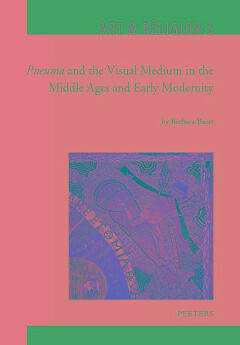
- Afhalen na 1 uur in een winkel met voorraad
- Gratis thuislevering in België vanaf € 30
- Ruim aanbod met 7 miljoen producten
- Afhalen na 1 uur in een winkel met voorraad
- Gratis thuislevering in België vanaf € 30
- Ruim aanbod met 7 miljoen producten
Zoeken
Pneuma and the Visual Medium in the Middle Ages and Early Modernity
Essays on Wind, Ruach, Incarnation, Odour, Stains, Movement, Kairos, Web and Silence
B Baert
€ 58,00
+ 116 punten
Omschrijving
The focus of these essays is the impact of wind, pneuma, and movement in medieval and early modern iconography on art historical hermeneutics. What can wind, pneuma, and movement tell us about the visual medium as such? Wind joins, flows, links, changes direction--in short, the wind is capricious. In its capriciousness wind embodies a particular hermeneutics of association, of freedom and the unexpected. Is an iconography of this caprice possible? How does one capture in pictorial form a natural phenomenon that envelops and penetrates us, even escapes from our own bodies? The dynamics of wind are after all only indirectly visible: swaying trees, waving grass, fluttering textile. How has wind impregnated the theory of the image? Is it a question of visual pneuma? And is wind in the arts a question of content, or rather a matter of formal affect?
Specificaties
Betrokkenen
- Auteur(s):
- Uitgeverij:
Inhoud
- Aantal bladzijden:
- 226
- Taal:
- Engels
- Reeks:
- Reeksnummer:
- nr. 5
Eigenschappen
- Productcode (EAN):
- 9789042932500
- Verschijningsdatum:
- 25/05/2016
- Uitvoering:
- Hardcover
- Formaat:
- Genaaid
- Gewicht:
- 45 g

Alleen bij Standaard Boekhandel
+ 116 punten op je klantenkaart van Standaard Boekhandel
Beoordelingen
We publiceren alleen reviews die voldoen aan de voorwaarden voor reviews. Bekijk onze voorwaarden voor reviews.











